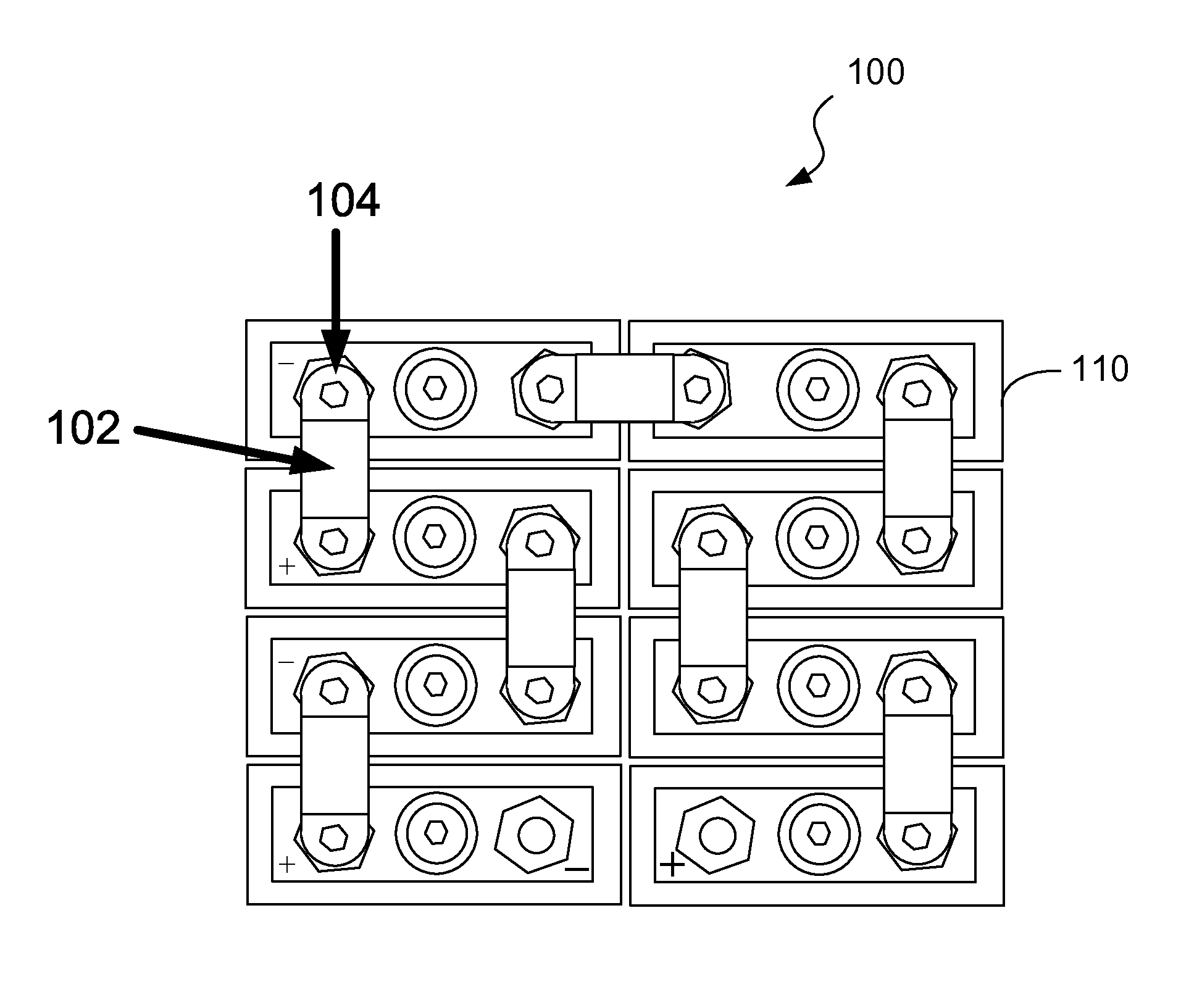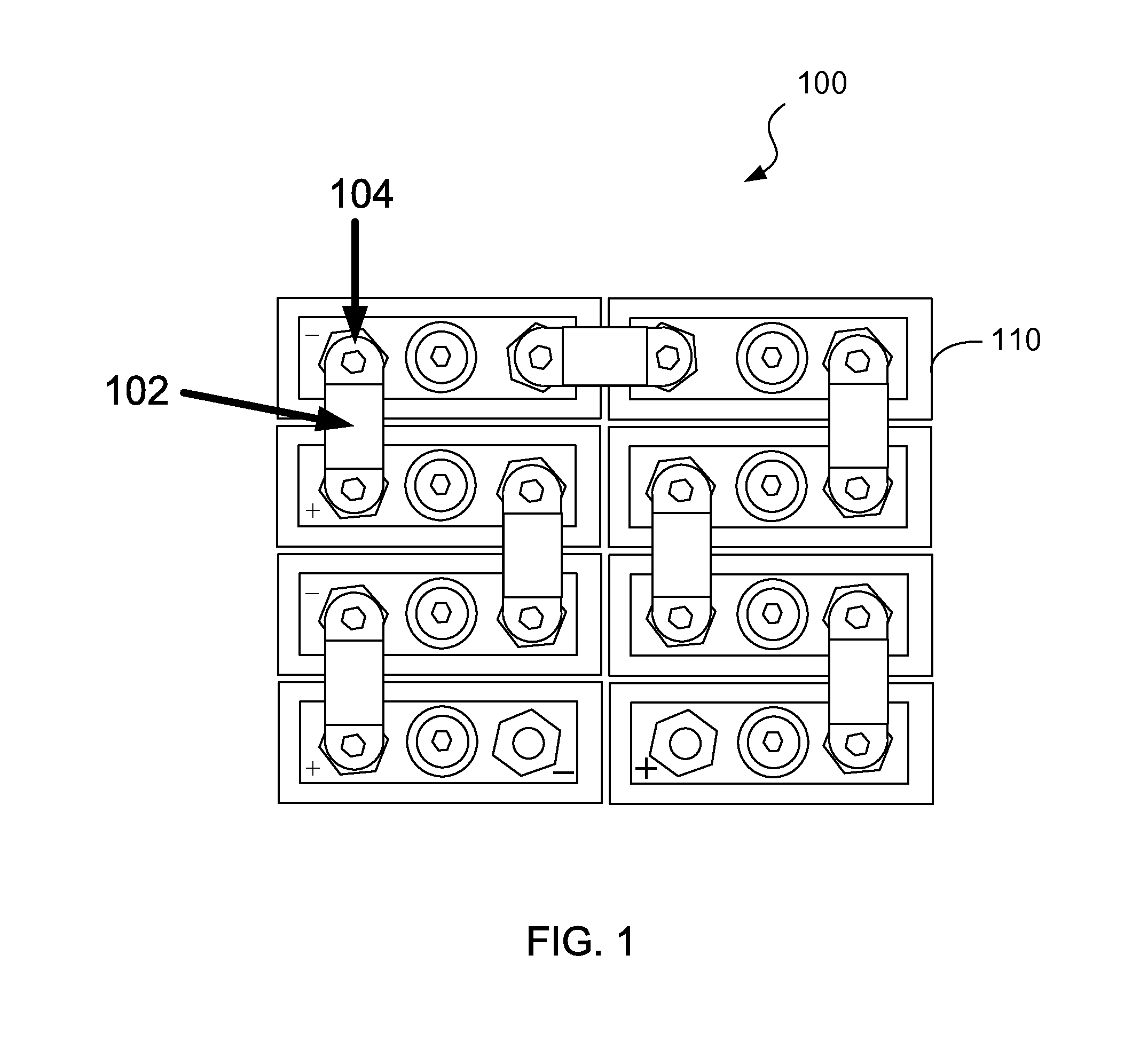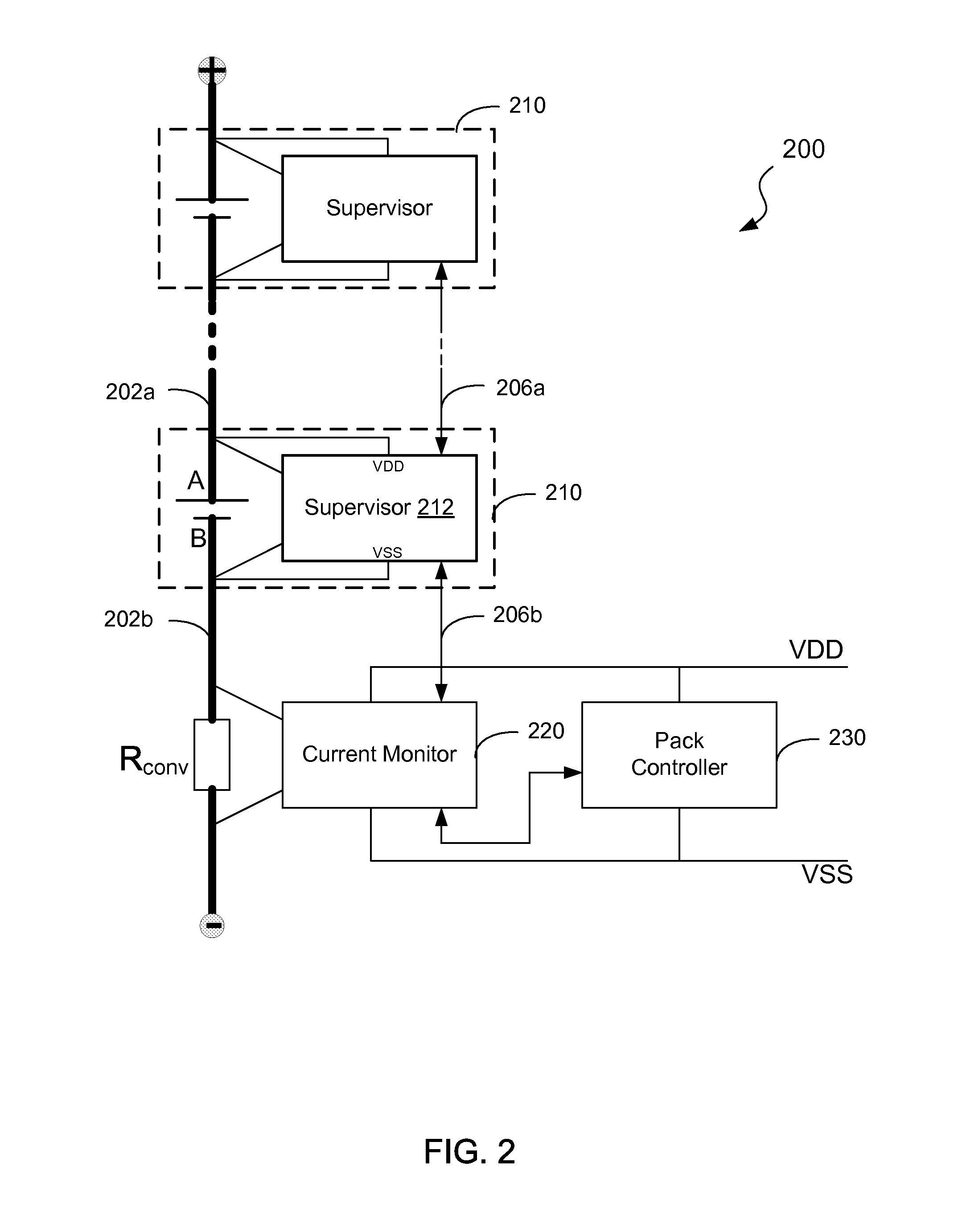Method and Apparatus for Contact Detection in Battery Packs
a battery pack and contact detection technology, applied in secondary cells, cell components, instruments, etc., can solve the problems of 10 w power dissipation, 1 m contact resistance is unacceptable, and the contact resistance will rise, so as to improve the performance of the battery pack, improve the contact resistance, and be easily integrated into the cell supervisor.
- Summary
- Abstract
- Description
- Claims
- Application Information
AI Technical Summary
Benefits of technology
Problems solved by technology
Method used
Image
Examples
Embodiment Construction
[0021]The detailed description set forth below in connection with the accompany drawings is intended as a description of exemplary embodiments of the present invention and is not intended to represent the only exemplary embodiments in which the present invention can be practiced. The detailed description includes specific details for the purpose of providing a thorough understanding of the exemplary embodiments of the specification. It will be apparent to those skilled in the art that the exemplary embodiments of the specification may be practiced without these specific details. In some instances, well known structures and devices are shown in block diagram form in order to avoid obscuring the exemplary embodiments presented herein.
[0022]The term “example” or “exemplary” as used throughout this application is only by way of illustration, and not limitation. Further, it will be understood that when an element is referred to as being “connected to” or “coupled to” another element, it ...
PUM
| Property | Measurement | Unit |
|---|---|---|
| power | aaaaa | aaaaa |
| voltage | aaaaa | aaaaa |
| threshold | aaaaa | aaaaa |
Abstract
Description
Claims
Application Information
 Login to View More
Login to View More - R&D
- Intellectual Property
- Life Sciences
- Materials
- Tech Scout
- Unparalleled Data Quality
- Higher Quality Content
- 60% Fewer Hallucinations
Browse by: Latest US Patents, China's latest patents, Technical Efficacy Thesaurus, Application Domain, Technology Topic, Popular Technical Reports.
© 2025 PatSnap. All rights reserved.Legal|Privacy policy|Modern Slavery Act Transparency Statement|Sitemap|About US| Contact US: help@patsnap.com



